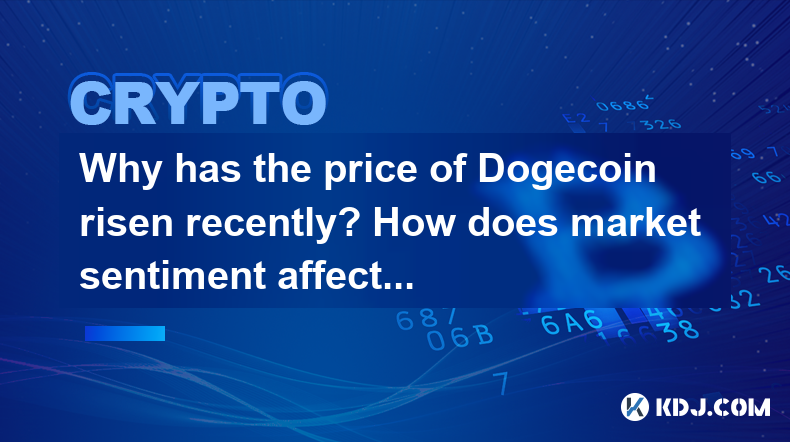-
 Bitcoin
Bitcoin $82,102.1606
-1.03% -
 Ethereum
Ethereum $1,814.5629
-1.18% -
 Tether USDt
Tether USDt $0.9999
0.02% -
 XRP
XRP $2.1263
-1.00% -
 BNB
BNB $603.2719
-0.41% -
 Solana
Solana $126.0027
0.72% -
 USDC
USDC $1.0000
0.00% -
 Dogecoin
Dogecoin $0.1674
-1.79% -
 Cardano
Cardano $0.6584
-2.66% -
 TRON
TRON $0.2331
1.35% -
 Toncoin
Toncoin $3.9044
6.18% -
 Chainlink
Chainlink $13.4479
-1.19% -
 UNUS SED LEO
UNUS SED LEO $9.1041
-5.29% -
 Stellar
Stellar $0.2672
-0.45% -
 Avalanche
Avalanche $18.9039
-4.11% -
 Sui
Sui $2.3263
0.85% -
 Shiba Inu
Shiba Inu $0.0...01249
-1.68% -
 Hedera
Hedera $0.1661
-4.05% -
 Litecoin
Litecoin $86.0013
0.27% -
 Polkadot
Polkadot $4.0520
-1.23% -
 MANTRA
MANTRA $6.2243
-1.75% -
 Bitcoin Cash
Bitcoin Cash $300.1882
-1.21% -
 Bitget Token
Bitget Token $4.5588
-2.34% -
 Dai
Dai $1.0001
0.01% -
 Ethena USDe
Ethena USDe $1.0001
0.05% -
 Pi
Pi $0.7651
-4.21% -
 Hyperliquid
Hyperliquid $12.5069
-2.81% -
 Monero
Monero $216.8807
0.39% -
 Uniswap
Uniswap $5.9173
-1.47% -
 Aptos
Aptos $5.3192
1.53%
What is the reason for the fork between BCH and BTC?
Bitcoin Cash (BCH) forked from Bitcoin (BTC) due to disagreements over scalability. Differing views on block size and transaction speeds, along with ideological clashes regarding Bitcoin's future, led to the creation of two independent cryptocurrencies.
Mar 25, 2025 at 12:28 pm

Key Points:
- The Bitcoin Cash (BCH) fork from Bitcoin (BTC) stemmed from differing visions regarding Bitcoin's scalability and functionality.
- Core disagreements centered around block size limitations and transaction processing speeds.
- The resulting hard fork created two separate blockchain networks, each with its own set of rules and governance.
- The debate involved ideological differences about Bitcoin's purpose and future direction.
- Both BTC and BCH continue to exist and operate independently.
What is the reason for the fork between BCH and BTC?
The genesis of Bitcoin Cash (BCH) lies in a significant disagreement within the Bitcoin community concerning the optimal path for the cryptocurrency's future development. This fundamental disagreement ultimately led to a hard fork, creating two separate cryptocurrencies: Bitcoin (BTC) and Bitcoin Cash (BCH).
The core issue fueling the divide was scalability. Bitcoin's block size, which limits the amount of transaction data that can be processed per block, had become a contentious point. Proponents of larger block sizes argued that the existing limit hampered transaction speeds and increased fees, hindering Bitcoin's potential for widespread adoption. They believed larger blocks were essential for Bitcoin to handle a growing number of transactions efficiently.
Conversely, those who favored maintaining the smaller block size emphasized the importance of network security and decentralization. They argued that increasing the block size too drastically could centralize mining power, potentially making the network vulnerable to attacks. They believed that scaling solutions should focus on alternative methods, such as the Lightning Network, rather than simply increasing the block size.
This debate wasn't merely a technical one; it encompassed fundamental philosophical differences about Bitcoin's purpose. Some viewed Bitcoin primarily as a store of value, akin to digital gold, where speed wasn't paramount. Others envisioned Bitcoin as a peer-to-peer electronic cash system, requiring significantly faster transaction processing to be truly useful for everyday payments.
The tension escalated over several years, culminating in a hard fork in August 2017. This hard fork created two separate blockchain networks: the original Bitcoin (BTC) network, which maintained the smaller block size, and the new Bitcoin Cash (BCH) network, which implemented a significantly larger block size.
The hard fork essentially resulted in a split community. Miners and developers chose which chain to support, leading to the independent existence of both BTC and BCH. This split was not without its drama and controversy, with accusations of manipulation and disagreements over governance models.
The Bitcoin Cash fork wasn't a singular event; it also involved disagreements about the long-term vision for Bitcoin's functionality and its place in the evolving cryptocurrency landscape. The debate highlighted the challenges inherent in managing a decentralized, global network with diverse stakeholders and varying priorities.
Technical Aspects of the Fork:
The hard fork involved changing the fundamental rules of the Bitcoin protocol. Specifically, the BCH fork increased the maximum block size, allowing for a greater number of transactions per block. This directly addressed the scalability concerns that fueled the division within the Bitcoin community.
- Increased Block Size: The most significant change implemented by BCH was a substantial increase in the maximum block size. This alteration aimed to improve transaction throughput and reduce processing times.
- Different Mining Algorithms (Initially): While not initially a primary point of contention, some subsequent BCH forks have explored changes to the mining algorithm, differing from BTC's SHA-256 algorithm.
- Governance Models: The governance structures and decision-making processes for BTC and BCH diverged following the fork. This reflects differing philosophies on how the respective networks should be managed and developed.
The implementation of these changes required a hard fork, a permanent split in the blockchain, creating two distinct and independent cryptocurrencies.
Beyond the Technicalities:
The BCH/BTC fork highlights the complexities inherent in managing a decentralized, globally accessible system like a cryptocurrency. The disagreements extended beyond technical specifications; they touched upon fundamental questions of Bitcoin's intended purpose and its long-term vision.
The differing views on scalability directly impacted the perceived usability of each cryptocurrency. The BCH proponents aimed for a system more readily usable for everyday transactions, while the BTC supporters prioritized security and decentralization, even if it meant slower transaction speeds.
This philosophical divide continues to shape the development and trajectory of both BTC and BCH. The ongoing evolution of each cryptocurrency reflects the distinct priorities and perspectives of their respective communities.
Common Questions and Answers:
Q: Can I still use my old Bitcoin after the BCH fork?
A: Yes, if you held BTC before the fork, you would likely have received an equivalent amount of BCH. However, accessing and managing your BCH would require using a compatible wallet that supported BCH.
Q: What are the main differences between BTC and BCH?
A: The most significant difference is the block size. BCH has a larger block size, enabling faster transaction processing. This difference reflects differing visions regarding Bitcoin's scalability and intended use.
Q: Is Bitcoin Cash a successful fork?
A: The success of Bitcoin Cash is subjective and depends on the metrics used. While it established itself as a separate cryptocurrency, its market capitalization and adoption have not reached the levels of Bitcoin.
Q: What are the future prospects of BCH?
A: The future of BCH is uncertain and depends on various factors, including community support, technological advancements, and market adoption.
Q: Are there any other forks of Bitcoin besides BCH?
A: Yes, Bitcoin has undergone several other hard forks, resulting in various alternative cryptocurrencies, each with its unique features and objectives. However, BCH remains one of the most prominent and successful forks.
Disclaimer:info@kdj.com
The information provided is not trading advice. kdj.com does not assume any responsibility for any investments made based on the information provided in this article. Cryptocurrencies are highly volatile and it is highly recommended that you invest with caution after thorough research!
If you believe that the content used on this website infringes your copyright, please contact us immediately (info@kdj.com) and we will delete it promptly.
- Dawgz AI ($DAGZ) Tops the List of the Top 3 Penny Crypto Coins to Buy
- 2025-03-31 09:40:13
- 200 Free Spins by Redeeming the Active Coin Master Links on March 30, 2025
- 2025-03-31 09:40:13
- Crypto Boom in South Korea: 32% of Population Engaged
- 2025-03-31 09:35:12
- Consumer spending in the U.S. grew by a weaker-than-expected 0.1% in February
- 2025-03-31 09:35:12
- Meme Coin DOGE Is Pumping Again, Bringing Back Memories of Its 2021 Bull Run
- 2025-03-31 09:30:12
- Vitalik Buterin Presents New Roadmap to Improve Ethereum's Scalability, Security, and Finality
- 2025-03-31 09:30:12
Related knowledge

What are the official USDT trading platforms? The latest top ten USDT trading platforms
Mar 27,2025 at 05:23pm
Full analysis of USDT trading platform: Exploring the official and the top ten latest platforms1. Understand USDTUSDT, or Tether, is a stablecoin pegged to the US dollar. Its issuer promises that each USDT will have one dollar reserve as support, aiming to provide a stable value scale and medium for trading for the digital currency market. In digital cu...

Bitcoincoin price forecast for 2030: Can it break through $5?
Mar 27,2025 at 05:06pm
1. Macro factors affecting Dogecoin price Overall trend in the cryptocurrency market The cryptocurrency market has strong correlation, and the trend of Bitcoin often leads the market. During the 2020-2021 bull market, the price of Bitcoin soared from less than $10,000 at the beginning of 2020 to nearly $70,000 in November 2021. At the same time, Dogecoi...

Why has Dogecoin prices rise recently? How does market sentiment affect Doge?
Mar 27,2025 at 04:51pm
Reasons and market sentiment analysis of Dogecoin price recent riseDogecoin (DOGE) price fluctuations have always been known for their drastic nature, and recent rises are no exception. Understanding its price fluctuations requires examining several factors, among which market sentiment plays a crucial role. But relying solely on emotions to explain pri...

What is the future price trend of Bitcoincoin? How much will it increase in 2025?
Mar 27,2025 at 03:20pm
Dogecoin (DOGE) Price Prediction: 2025 and BeyondPredicting the future price of any cryptocurrency, including Dogecoin, is inherently speculative. No one can definitively say what the price of DOGE will be in 2025 or any other future date. However, we can analyze various factors that might influence its price and explore potential scenarios. The crypto...

Q2 2025 Bitcoin price forecast: Can institutional capital inflows push a new high of $100,000?
Mar 27,2025 at 03:03pm
The big reveal of the factors that affect Bitcoin priceThe supply and demand relationship is the 'behind the scenes' of priceThe total amount of Bitcoin is set to 21 million, which is fixed and unchanged just like being locked. As mining difficulty increases and block rewards are halved, the supply is getting smaller and smaller. During the bull market,...

Ethereum Price Forecast 2025-2030: From $5,000 to $50,000 The Defi Revolution
Mar 27,2025 at 02:50pm
As an important force in the blockchain field, Ethereum's price trend has always attracted much attention. When exploring the possibility of Ethereum prices going from $5,000 to $50,000 in 2025-2030, it is necessary to deeply analyze the various driving factors behind it, especially in the development of decentralized finance (DeFi).Ethereum’s core ...

What are the official USDT trading platforms? The latest top ten USDT trading platforms
Mar 27,2025 at 05:23pm
Full analysis of USDT trading platform: Exploring the official and the top ten latest platforms1. Understand USDTUSDT, or Tether, is a stablecoin pegged to the US dollar. Its issuer promises that each USDT will have one dollar reserve as support, aiming to provide a stable value scale and medium for trading for the digital currency market. In digital cu...

Bitcoincoin price forecast for 2030: Can it break through $5?
Mar 27,2025 at 05:06pm
1. Macro factors affecting Dogecoin price Overall trend in the cryptocurrency market The cryptocurrency market has strong correlation, and the trend of Bitcoin often leads the market. During the 2020-2021 bull market, the price of Bitcoin soared from less than $10,000 at the beginning of 2020 to nearly $70,000 in November 2021. At the same time, Dogecoi...

Why has Dogecoin prices rise recently? How does market sentiment affect Doge?
Mar 27,2025 at 04:51pm
Reasons and market sentiment analysis of Dogecoin price recent riseDogecoin (DOGE) price fluctuations have always been known for their drastic nature, and recent rises are no exception. Understanding its price fluctuations requires examining several factors, among which market sentiment plays a crucial role. But relying solely on emotions to explain pri...

What is the future price trend of Bitcoincoin? How much will it increase in 2025?
Mar 27,2025 at 03:20pm
Dogecoin (DOGE) Price Prediction: 2025 and BeyondPredicting the future price of any cryptocurrency, including Dogecoin, is inherently speculative. No one can definitively say what the price of DOGE will be in 2025 or any other future date. However, we can analyze various factors that might influence its price and explore potential scenarios. The crypto...

Q2 2025 Bitcoin price forecast: Can institutional capital inflows push a new high of $100,000?
Mar 27,2025 at 03:03pm
The big reveal of the factors that affect Bitcoin priceThe supply and demand relationship is the 'behind the scenes' of priceThe total amount of Bitcoin is set to 21 million, which is fixed and unchanged just like being locked. As mining difficulty increases and block rewards are halved, the supply is getting smaller and smaller. During the bull market,...

Ethereum Price Forecast 2025-2030: From $5,000 to $50,000 The Defi Revolution
Mar 27,2025 at 02:50pm
As an important force in the blockchain field, Ethereum's price trend has always attracted much attention. When exploring the possibility of Ethereum prices going from $5,000 to $50,000 in 2025-2030, it is necessary to deeply analyze the various driving factors behind it, especially in the development of decentralized finance (DeFi).Ethereum’s core ...
See all articles






















































































